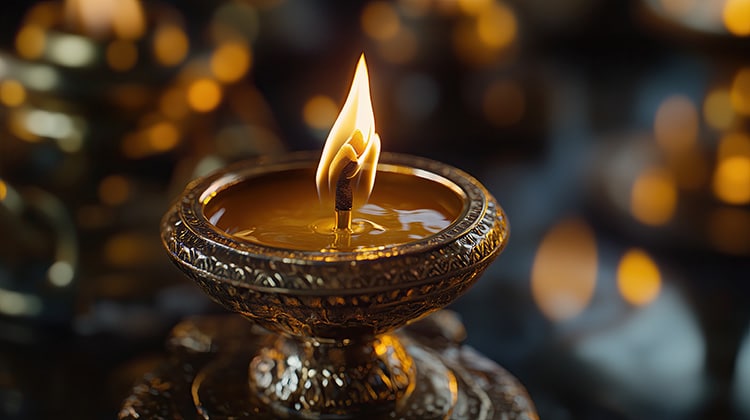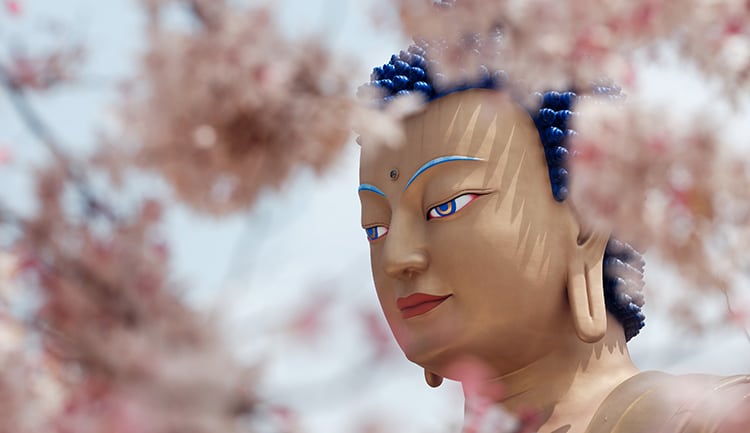Simple Yogic Breathing Techniques for Stress Relief
Category: Health and Meditation | Meditation and the Brain | Stress and Anxiety

Breathe Deeply: Why Deep Breathing Helps to Calm Your Stress
When stressed, our breath gets short and shallow, a sign that fight or flight mode (the sympathetic nervous system) has kicked in. Deep, focused breathing activates the parasympathetic nervous system, reducing anxiety and inducing calm. You can learn simple yogic breathing techniques for stress relief.
Meditation, mindfulness and yoga all have a few things in common. In particular, each of these contemplative practices emphasizes breath awareness, which when practiced regularly result in greater feelings of peace and ease. Researchers, long curious as to why, think the answer lies in the vagus nerve. The vagus nerve is a long, complex nerve that runs from the brain down through the head and chest and into the belly. It plays an important role in advocating for parasympathetic nervous system activation. When we’re stressed and in ‘fight or flight mode’ stimulation of the vagus nerve activates ‘rest and digest mode,’ returning us to a state of balance.
Those with strong ‘‘vagal tone’ still get stressed, but they’re able to relax and return to a homeostatic state more quickly. So, how can you improve responsiveness of the vagus nerve? By working with your breath. Breath and emotions are linked together in a complex feedback loop. When we’re stressed, our breath gets short and shallow. When we’re relaxed, we tend to take longer, deeper and more patient breaths. Because this system is a loop and not a one-way street, we can use breath to influence our autonomic nervous system, just as the ANS influences breath.
Yoga Breathing Exercises For Stress Relief
Yoga is the union of body and mind. Yogic breathing techniques, called pranayama in Sanskrit, make use of the body’s physiology to affect its neurophysiology. In particular, certain breathing techniques strengthen vagal tone.
The 4 methods below are simple breath meditation techniques anyone can practice for stress relief. Try them the next time you sit down to meditate, or when you’re feeling anxious. There are also great courses available for meditation and stress relief.
1. Slow, Deep Breathing
Pay attention to your breath and you may notice your breathing slows down. When we breathe more slowly, we also breathe more deeply. Studies show that slow, deep breathing inhibits the sympathetic nervous system by stimulating the vagus nerve. What’s more, this effect increases as lung volume does.
2. Longer Exhalations
When we’re stressed, we breathe harder and faster, yawn or gasp for more oxygen as the body prepares for fight or flight. We’re focused on the inhalation. Focusing on the exhale breath calms the body down. On the exhalation, the vagus nerve secretes a neurotransmitter that slows our heart beat. Spend more time breathing out than breathing in to amplify this effect.
3. Diaphragmatic Breathing
Shallow breathing that takes place in the chest is a clear sign of stress. We can reverse this state by breathing more deeply into our diaphragm. Diaphragmatic breathing puts pressure on the vagus nerve, which triggers a calming, parasympathetic response.
To try it, put one hand on your belly and one hand on your heart. Breathe in deeply, causing the hand on your belly to rise. Feel the belly relax as you breathe out. Keep the hand on your heart relatively still through the entire cycle of breath.
4. Breath Holding
Once you’re comfortable with diaphragmatic breathing, try pausing at the top of each breath in. Hold your breath for a count of 1, 2 or 3. Then, exhale slowly. Take as much time as you’d like (without holding the breath) before you breathe in again. Retaining the inhale breath is another way to gently stimulate the vagus nerve.
The above calming breath techniques are laid out in a progressive order. Get comfortable with the first before moving on to the second. You can even combine them. For example, breathe slowly and deeply, emphasizing exhale breath. Then, practice holding your breath at the top of each inhale.
Breath, Meditation and Yoga
Yoga breathing techniques aren’t just reserved for yoga class, but can (and should) be practiced during seated meditation. Ordinarily, while practicing mindfulness of the breath, we observe the breath without making efforts to change it. But there’s more than one way to practice breath-focused meditation. Choose a breath practice from the list above, practice for 1-3 minutes, then return to normal breathing and note how you feel.
Practice yogic breathing techniques when meditating and you’ll find it easier to incorporate these tools in a stressful situation. You will find that breath awareness can benefit your overall health. Wondering where to start? Here’s a clue, try an online meditation course led by great teachers.








